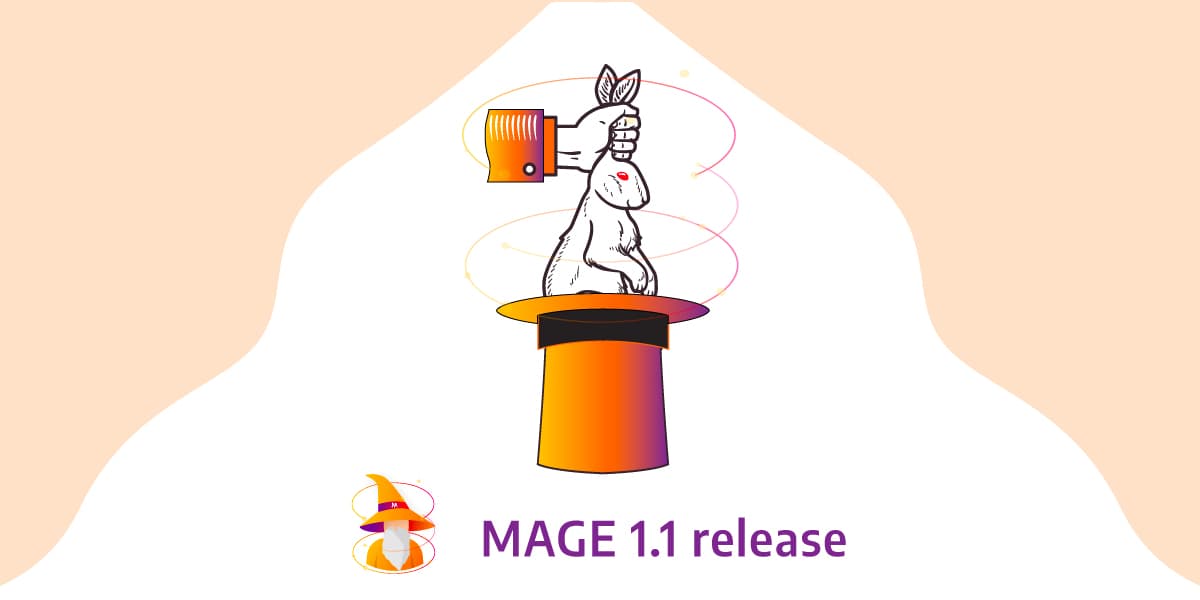
Announcing MAGE 1.1
Something different this time! Our platform offers novelties with each release, bringing the best of the world of graphs and streaming. This time, it's all about magic. We have enriched Memgraph MAGE with algorithms that work with dynamic/temporal graphs and focused on the most popular algorithms for extracting the hidden knowledge of streaming graph data.
Don't feel like reading? Check out the video our CEO Dominik has prepared 👇
Streaming graph algorithms
The selection of the three most popular graph algorithms will showcase the possibilities of graph analytics with Memgraph and streaming. The field of streaming algorithms is still insufficiently researched, but the pioneers of the field have laid a quality foundation for further development of technology.
Dynamic Node2Vec
Mapping graph entities into vector space makes it easier to process graph data. When the system is organized in such a way that data in the form of connections arrive in a very short period, then Dynamic Node2Vec can serve to map them into vector space in real-time. The local change algorithm solves the problem of scalability and stability that standard methods would have.
Dynamic PageRank
PageRank's applications in the industry range from finance, pharmaceutical, automotive to social media. The real problems within such systems demand real-time results on high-scale data. Dynamic PageRank is made as a substitute for its classic version, which instead of restarting when a new version of the graph appears, just updates over the changes that have taken place.
Dynamic Community Detection
The community detection algorithm called LabelRank is available for static data. Nevertheless, the demand for temporal/dynamic graphs has led to Dynamic Community Detection - dynamic LabelRank. For example, in systems such as insurance fraud, it is possible to quickly identify situations in which the user belongs to a previously detected criminal community.
Return of the Rust
Rust is back for us! After dropping out of version 1.0 due to changes in the API, this time, Rust is coming back stronger than ever. The API is this time compliant with Memgraph version 2.0+. But that's not all, in addition, support for temporal types has been implemented!
We invite you to use your Rust knowledge and apply it to graphs. Feel free to drop on our GitHub repo and make a PR.
Static Node2Vec
Last but not least is the most popular graph preprocessing tool - Node2Vec. It is one of the most used methods of node embeddings. It serves as an entrance point for numerous Machine learning tasks and we are looking forward to extending these possibilities in future releases!
MAGE 1.1 Live Demo
Want to learn more about using MAGE and Memgraph? If the answer is yes, then you should definitely join our live demo on December 20th at 5 PM (CET). We will use the new dynamic algorithms to analyze a network of tweets and retweets with the hashtag #christmas. Is there a better use for the PageRank algorithm than to find the most Christmassy person on Twitter?🎄😁
What's next?
This is only the beginning of our magical adventures. We encourage you to try out the methods mentioned in this post. Before you do, we've prepared a bunch of articles related to dynamic graph algorithms:
- Introduction to Node Embedding
- How Node2Vec works
- Link prediction with Node2Vec
- How Dynamic Node2Vec Works on Streaming Data
- Recommendation System Using Online Node2Vec
- Dynamic PageRank on Streaming Data
- Dynamic PageRank and a Twitter Network
- LabelRankT – Community Detection in Dynamic Environment
- Monitoring a Dynamic Contact Network with Online Community Detection
Follow the GitHub installation instruction on the link here. Drop us a pull request here if you feel inspired and want to help us enhance MAGE further. If you encounter any problems, the documentation is always at your service.
We also invite you to join our Discord Server and stay informed on everything Memgraph related!
Agraphcadabra!
